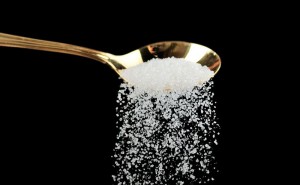 Sweetener adjustment is a concern every food formulator faces at least once in his or her career. The beverage industry has become more focused on reducing sugar rather than on products that are completely sugar-free, and this requires knowledge of interaction and potency level. And more and more formulators face the challenge of sugar reduction in the natural arena, as well. Formulators increasingly need to know about the natural sugar replacers available to them.
Sweetener adjustment is a concern every food formulator faces at least once in his or her career. The beverage industry has become more focused on reducing sugar rather than on products that are completely sugar-free, and this requires knowledge of interaction and potency level. And more and more formulators face the challenge of sugar reduction in the natural arena, as well. Formulators increasingly need to know about the natural sugar replacers available to them.
Whether you need to reduce the existing sugar content without compromising taste, switch out high fructose corn syrup for an alternate sweetener, trade a high intensity sweetener for an alternative, or clean up a label to simplify the ingredient declaration, there are many options to assist you in your product development endeavors. I’ve highlighted several current trends and ingredients below. Click the links to check out the ingredients in Prospector.
Natural high intensity sweeteners have become popular, especially since stevia received regulatory approval in the EU in November 2011 and in Canada in November 2012. It is approximately 250 times sweeter than sugar. Of the steviol glycosides, the sweetening compounds found within stevia, Rebaudioside A is the least bitter, and may be listed by suppliers as Reb A. Erythritol is commonly used in combination with stevia to round off the perceived bitter notes detected when using stevia alone during formulation. This combination has been recently seen in chewing gums, instant tea mixes, protein bars, chocolate, and carbonated beverages.
One natural sweetener that has been gaining momentum is monk fruit extract or luo han guo. It can be found on on labels for ales, dairy free frozen desserts, cookies, diet smoothies and shake mixes. It was recently approved by Health Canada for use as a sweetener, which is broadening its appeal. With its presence as a packet sweetener in the US, consumers are becoming more and more familiar with it. It is 300 times sweeter than sugar and is heat tolerant, which makes it a viable option for baked goods.
Another option to consider is glycyrrhizin, which is extracted from licorice root, is approximately 50 times sweeter than sugar, and has been recently used in products like potato crisps in Spain as well as drink mixes and sauces in Taiwan. It is GRAS in the US, but not for use as a sweetener, and there are limitations on consumption in the EU. So make sure your country regulations are taken into consideration.
If your formulation will not support high intensity sweeteners, consider agave syrup, tapioca syrup, fruit-based syrups or maple syrup as other options.
As seen with the newer stevia/erythritol combination used in products, more and more manufacturers are finding success with products using a combination of sweeteners rather than relying on just one. This approach is helpful in balancing or intensifying the sweetness effect of the ingredients when used individually. Some flavors may also help reduce bitter notes, or aid in intensifying the sweetness impact when using these natural sweeteners.
While there is a huge amount of information on this subject, I hope this article will provide a base of knowledge on some of the newer options available as you start your own research. As always, be cautioned that the sugars present in a formulation reduce the water activity in your products, and therefore altering the content can make the water more available for bacteria and mold. Research bulking agents to compensate for the removal of sugars in your application, as your solids content may be adversely affected. Consider a shelf life study to assure that you have not adversely affected the product stability of your formulation. As always, make sure that you are aware of the regulatory limitations that you may encounter when producing a product with these sweeteners.
Product Resources (North America)
- Stevia
- Reb-A
- Monk Fruit Extract/Luo Han Guo
- Erythritol
- Glycyrrhizin
- Agave Syrup
- Tapioca Syrup
- Maple Syrup
- Fruit Syrups
Product Resources (Europe)
The views, opinions and technical analyses presented here are those of the author or advertiser, and are not necessarily those of ULProspector.com or UL Solutions. The appearance of this content in the UL Prospector Knowledge Center does not constitute an endorsement by UL Solutions or its affiliates.
All content is subject to copyright and may not be reproduced without prior authorization from UL Solutions or the content author.
The content has been made available for informational and educational purposes only. While the editors of this site may verify the accuracy of its content from time to time, we assume no responsibility for errors made by the author, editorial staff or any other contributor.
UL Solutions does not make any representations or warranties with respect to the accuracy, applicability, fitness or completeness of the content. UL Solutions does not warrant the performance, effectiveness or applicability of sites listed or linked to in any content.


